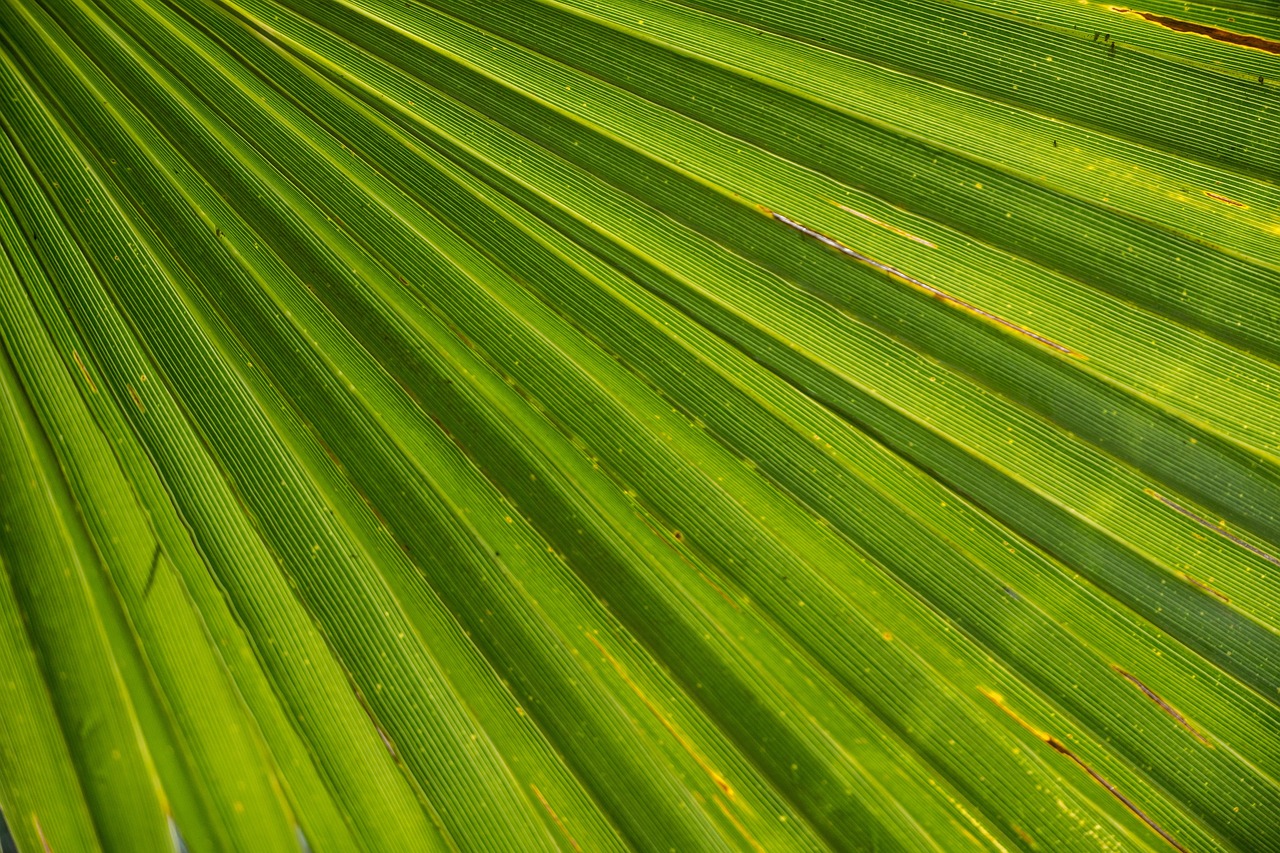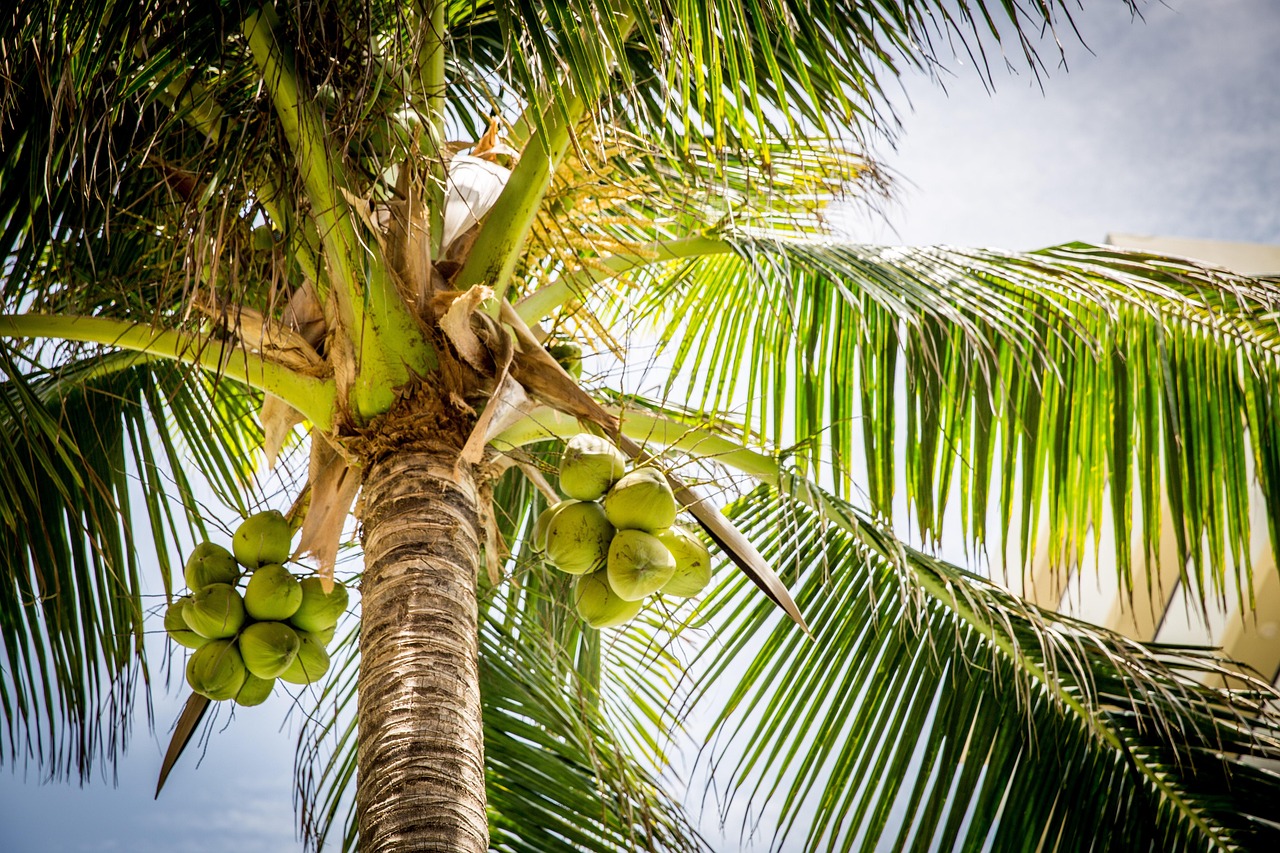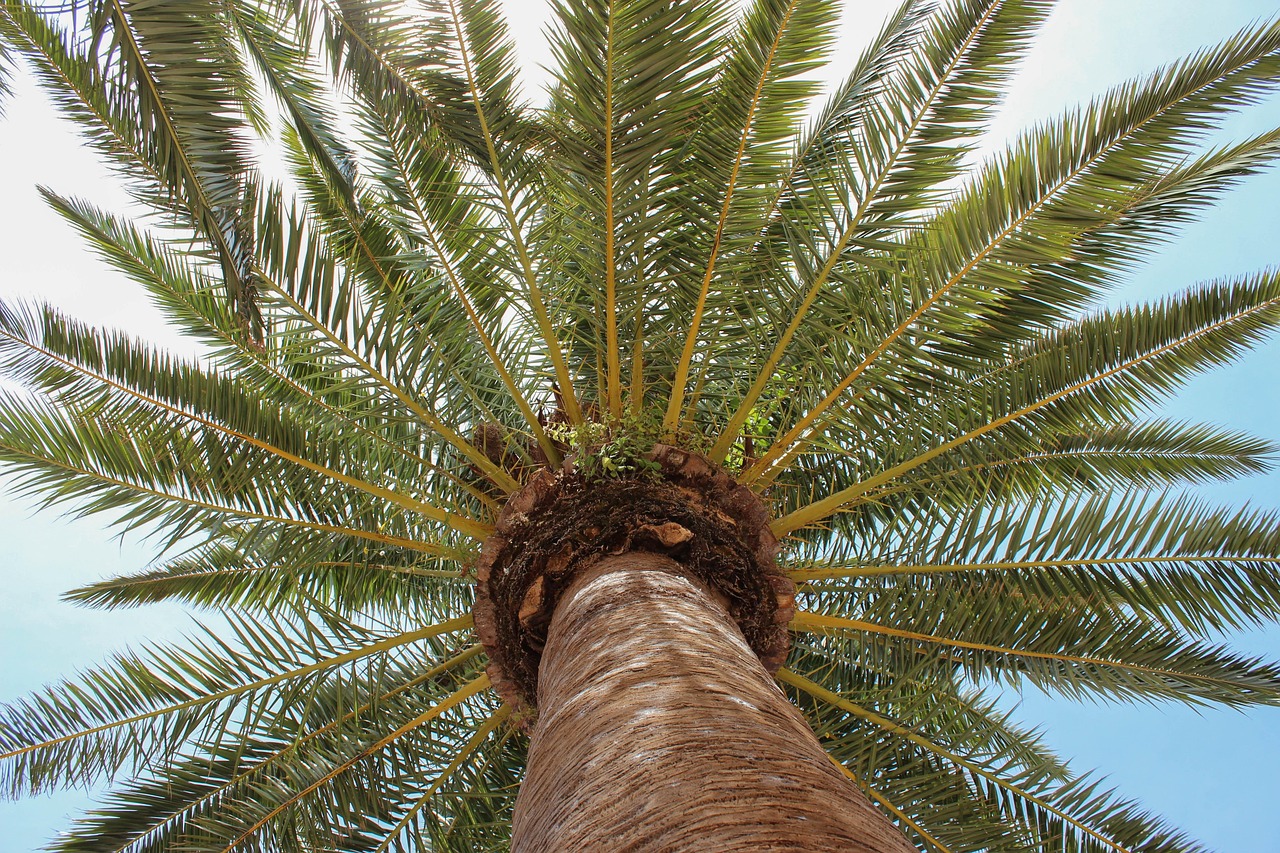The Queen Palm tree (Syagrus romanzoffiana) typically exhibits a growth rate of about 2 to 3 feet per year in urban landscapes, depending on environmental conditions and care practices.
Queen Palms are a popular choice for urban landscapes due to their elegant appearance and adaptability. They feature long, feathery fronds that create a lush tropical look. These trees can grow quite tall, reaching heights of 50 to 70 feet. Their rapid growth makes them appealing for those looking to enhance their gardens or commercial properties quickly.

Understanding the growth rate of Queen Palms is essential for landscape planning. Their height and canopy spread can influence the design of urban spaces. Proper knowledge allows homeowners and landscape architects to make informed decisions about placement, maintenance, and care. Queen Palms thrive in well-drained soils and require regular watering, especially during dry spells.
Growth Conditions
Several factors affect the growth rate of Queen Palms in urban settings. These include soil quality, water availability, sunlight exposure, and temperature. Below are key elements that contribute to their growth:
- Soil Quality: Queen Palms prefer sandy, well-draining soil. Poor drainage can lead to root rot, which stunts growth.
- Watering: Regular watering is crucial, especially for young trees. Established trees can tolerate some drought but benefit from consistent moisture.
- Sunlight: These palms thrive in full sun. They need at least six hours of direct sunlight daily to achieve optimal growth.
- Temperature: Queen Palms are hardy in USDA zones 9 to 11. They flourish in warm climates and can tolerate brief periods of cold.
The growth rate can also be influenced by urban factors such as pollution and soil compaction. Trees planted in city environments may face challenges that slow their development. However, with proper care, they can flourish even in these conditions.

Growth Rate Comparison
The growth rate of Queen Palms can be compared with other common landscape trees. Understanding these differences helps in selecting the right tree for specific needs. The following table outlines the average growth rates of various popular trees alongside the Queen Palm:
| Tree Type | Average Growth Rate (feet/year) | Height at Maturity (feet) |
|---|---|---|
| Queen Palm | 2-3 | 50-70 |
| Live Oak | 1-2 | 40-80 |
| Crape Myrtle | 3-4 | 15-30 |
| Lemon Tree | 1-2 | 10-20 |
| Sago Palm | 1-2 | 6-10 |
This comparison highlights that while Queen Palms have a moderate growth rate, they can achieve significant height quickly compared to other species. This makes them an excellent choice for creating vertical interest in urban landscapes.
The rapid growth of Queen Palms often leads to their use in commercial properties, parks, and residential areas. Their tall stature can provide shade and create a more inviting environment. Additionally, their ability to adapt to various soil types enhances their suitability for diverse landscaping projects.

In urban landscapes, it is important to consider the maintenance required for these trees. Regular pruning helps maintain their shape and removes any dead fronds. Fertilization can also promote healthy growth and vibrant foliage. Urban planners and residents alike should be aware of these care requirements to ensure the longevity and health of Queen Palms.
As cities continue to expand, incorporating trees like the Queen Palm into landscape designs will not only enhance aesthetic appeal but also contribute to environmental benefits such as improved air quality and increased biodiversity.
Care and Maintenance of Queen Palms
To ensure that Queen Palms thrive in urban landscapes, proper care and maintenance are essential. These trees require specific attention to their watering, fertilization, pruning, and pest management. Understanding these needs will help maintain their health and promote optimal growth.
Watering Requirements
Watering is a critical aspect of Queen Palm care. Newly planted palms require more frequent watering to establish their root systems. Here are some guidelines for effective watering:

- Water deeply once a week during dry periods.
- Avoid waterlogging by ensuring good drainage in the planting area.
- Monitor the soil moisture; the top inch should be dry before watering again.
- Use mulch around the base to retain soil moisture and regulate temperature.
Fertilization Practices
Fertilizing Queen Palms is necessary for healthy growth and vibrant foliage. Regular feeding helps replenish nutrients in the soil that may be depleted over time. Consider the following tips:
- Use a slow-release, balanced fertilizer specifically formulated for palms, typically with an N-P-K ratio of 8-2-12.
- Fertilize during the growing season, which usually spans from spring to early fall.
- Apply fertilizer at the base of the tree, avoiding direct contact with the trunk.
- Follow package instructions for application rates based on the size of the palm.
Pruning Techniques
Regular pruning is essential for maintaining the shape and health of Queen Palms. Proper pruning helps remove dead or damaged fronds and promotes air circulation. Here are some best practices:
- Remove only the fronds that are completely brown or dead. Healthy green fronds should be left intact to support growth.
- Use clean, sharp tools to prevent disease transmission.
- Avoid over-pruning, as this can stress the tree and inhibit growth.
- Prune during the growing season for optimal recovery.
Pest and Disease Management
Like any plant, Queen Palms can be susceptible to pests and diseases. Being vigilant helps in early detection and management. Common pests that affect Queen Palms include:
- Palm Weevils: These insects can cause significant damage to the tree’s trunk. Look for signs such as frass (sawdust) around the base.
- Scale Insects: These pests can weaken the tree by sucking sap. They often appear as small, brown bumps on the fronds.
- Spider Mites: These tiny pests thrive in dry conditions and can cause yellowing of leaves.
If pests are detected, consider using appropriate insecticides or natural remedies like neem oil. Additionally, ensure good air circulation around the tree to reduce pest infestations.
Environmental Impact of Queen Palms
Queen Palms offer several environmental benefits when incorporated into urban landscapes. Their presence can significantly enhance urban ecosystems. Below are some key benefits:
- Air Quality Improvement: Trees play a vital role in improving air quality by absorbing carbon dioxide and releasing oxygen.
- Biodiversity Support: Queen Palms provide habitat for various bird species and beneficial insects, contributing to local biodiversity.
- Urban Heat Reduction: The shade provided by Queen Palms can help lower surrounding temperatures, contributing to the mitigation of urban heat islands.
- Stormwater Management: Their root systems can help absorb excess rainfall, reducing runoff and minimizing erosion.
Cultural Significance of Queen Palms
The Queen Palm is not only valued for its beauty but also holds cultural significance in various regions. Its elegant appearance makes it a popular choice for landscaping in tropical and subtropical areas. Here are some insights into its cultural relevance:
- Symbol of Tropical Elegance: The graceful form of Queen Palms often symbolizes tropical paradise and luxury, making them ideal for resorts and upscale properties.
- Landscaping Tradition: In many coastal areas, Queen Palms are part of traditional landscaping designs that evoke a sense of place and heritage.
- Cultural Festivals: In some regions, Queen Palms may feature in local festivals or events celebrating nature and community beauty.
As urban development continues to grow, understanding both the practical care requirements and cultural significance of Queen Palms can enhance their integration into city landscapes. This balance fosters not only beautiful environments but also sustainable ecosystems that benefit both residents and wildlife alike.
Queen Palm Varieties and Their Characteristics
While the Queen Palm (Syagrus romanzoffiana) is the most commonly known species, there are several varieties and related species that exhibit unique characteristics. Understanding these variations can help landscape architects and homeowners choose the best option for their specific needs and environments.
Common Varieties of Queen Palms
There are a few notable varieties and closely related species of Queen Palms that are popular in landscaping:
- Syagrus romanzoffiana: This is the standard Queen Palm known for its tall stature, graceful fronds, and adaptability to various urban conditions.
- Syagrus botryophora: Known as the Brazilian Queen Palm, this variety has a thicker trunk and is slightly more resistant to cold temperatures, making it suitable for marginally cooler climates.
- Syagrus coronata: Often referred to as the Cocos Palm, this tree features a wider crown and is favored for its ornamental value in tropical landscapes.
Each variety has specific growth habits and care requirements, which should be considered when selecting a palm for urban environments.
Growth Characteristics
The growth characteristics of Queen Palms make them suitable for a variety of settings. Below are key features that define their growth:
- Height: Queen Palms can reach heights between 50 to 70 feet, making them excellent for creating vertical interest in landscapes.
- Canopy Spread: Their fronds can spread up to 25 feet, providing ample shade and visual appeal.
- Growth Rate: With a growth rate of approximately 2 to 3 feet per year, they can quickly establish themselves in new environments.
Choosing the Right Location for Queen Palms
Selecting an appropriate location for planting Queen Palms is crucial to their success. Consider the following factors when deciding where to plant:
Sunlight Exposure
Queen Palms thrive in full sun. They require at least six hours of direct sunlight daily. Areas that receive ample sunlight will encourage robust growth and vibrant foliage. When selecting a spot, observe the sunlight patterns throughout the day to ensure they meet this requirement.
Soil Conditions
The soil quality plays a significant role in the health of Queen Palms. Here are some guidelines regarding soil conditions:
- Drainage: Well-draining soil is essential to prevent root rot. Sandy loam is ideal for Queen Palms.
- Soil pH: A slightly acidic to neutral pH (between 6.0 and 7.0) is ideal for optimal nutrient uptake.
- Nutrient Content: Conducting a soil test can help determine nutrient levels. Supplementing with organic matter can enhance soil fertility.
Space Considerations
When planting Queen Palms, adequate spacing is important. These trees require room to grow both upwards and outward. Recommended spacing guidelines include:
- For individual plantings, space them at least 10 to 15 feet apart to allow for canopy spread.
- If planting in groups or clusters, ensure there is enough distance to maintain airflow and sunlight exposure among the trees.
Integrating Queen Palms into Landscape Design
Incorporating Queen Palms into landscape design enhances the aesthetic appeal and functionality of outdoor spaces. Here are some design tips:
Accent Planting
Queen Palms serve well as focal points in gardens or commercial properties. Their height and beauty can draw attention. Consider combining them with:
- Tropical Plants: Pair with other tropical species such as hibiscus or bougainvillea for a cohesive look.
- Hardscaping Elements: Use stones or decorative borders around the base to enhance their presence.
- Lawn Areas: Placing them in grassy areas can provide shade while improving overall landscape aesthetics.
Creating Shade Areas
The expansive fronds of Queen Palms provide excellent shade, making them ideal for creating comfortable outdoor areas. Consider these ideas:
- Parks and Recreation Areas: Plant Queen Palms near picnic areas or playgrounds to provide natural shade.
- Outdoor Seating: Position them strategically around patio spaces for enjoyable seating environments.
- Pathways: Use them along walking paths to create shaded corridors that enhance visitor experience.
By thoughtfully integrating Queen Palms into urban landscapes, planners and homeowners can elevate the beauty and functionality of their outdoor spaces while promoting environmental benefits.
Environmental Considerations and Sustainability
In urban landscapes, the integration of Queen Palms does not just enhance aesthetic appeal; it also plays a role in environmental sustainability. Trees contribute to urban ecosystems in various ways, from improving air quality to managing stormwater runoff. Here are some considerations to keep in mind:
Carbon Sequestration
Queen Palms, like other trees, absorb carbon dioxide from the atmosphere. This process helps mitigate the effects of climate change by reducing the overall concentration of greenhouse gases. As they grow, they store carbon in their biomass, making them valuable components of urban forestry efforts aimed at reducing carbon footprints.
Urban Cooling Effects
The shade provided by Queen Palms can significantly lower surface temperatures in urban areas. This phenomenon is crucial in combating the urban heat island effect, where cities become significantly warmer than surrounding rural areas due to human activities. By strategically planting Queen Palms, cities can:
- Reduce energy consumption for cooling purposes.
- Enhance outdoor comfort in public spaces.
- Minimize heat-related health risks for residents.
Supporting Wildlife
Queen Palms provide habitats for various species, including birds and beneficial insects. By incorporating these palms into urban landscapes, planners can contribute to biodiversity, which is essential for a healthy ecosystem. Consider the following benefits:
- Nesting Sites: The fronds of Queen Palms can serve as nesting sites for birds, contributing to local avian diversity.
- Foraging Opportunities: The flowers of Queen Palms attract pollinators such as bees and butterflies, supporting a wider range of plant life.
- Food Source: Some wildlife species may feed on the fruits produced by Queen Palms, adding another layer of ecological value.
Challenges in Urban Environments
While Queen Palms offer numerous advantages, there are challenges associated with their growth in urban settings. Understanding these challenges can help mitigate potential issues and ensure successful integration into landscapes.
Environmental Stressors
Urban environments often present stressors that can affect the health and growth of Queen Palms. Some common stress factors include:
- Poor Soil Quality: Urban soils may be compacted or contaminated, affecting root development and nutrient uptake.
- Pollution: Air and soil pollution can hinder growth and lead to disease susceptibility.
- Drought Conditions: Limited access to water can stress these palms, particularly during prolonged dry spells.
Maintenance Costs
The maintenance of Queen Palms in urban areas can require investment and effort. Regular care, including watering, fertilization, and pruning, needs to be budgeted for by property owners or city planners. Additionally, pest management may be necessary to maintain tree health. Planning for these ongoing costs is essential for successful long-term care.
Final Thoughts
The Queen Palm tree stands out as a remarkable choice for urban landscapes due to its rapid growth rate, aesthetic appeal, and environmental benefits. By understanding its care requirements and cultural significance, communities can harness its potential to enhance public spaces while contributing positively to the environment.
Incorporating Queen Palms into urban designs fosters not only beautiful environments but also sustainable ecosystems. Their ability to improve air quality, provide shade, and support local wildlife makes them invaluable in modern landscape architecture.
As cities continue to evolve, embracing trees like the Queen Palm will be essential for creating vibrant, healthy environments. Engaging with these magnificent trees can lead to improved quality of life for urban residents while ensuring that nature remains an integral part of our cities.
With thoughtful planning and consideration, Queen Palms can flourish in urban landscapes, making cities greener and more welcoming for everyone.
